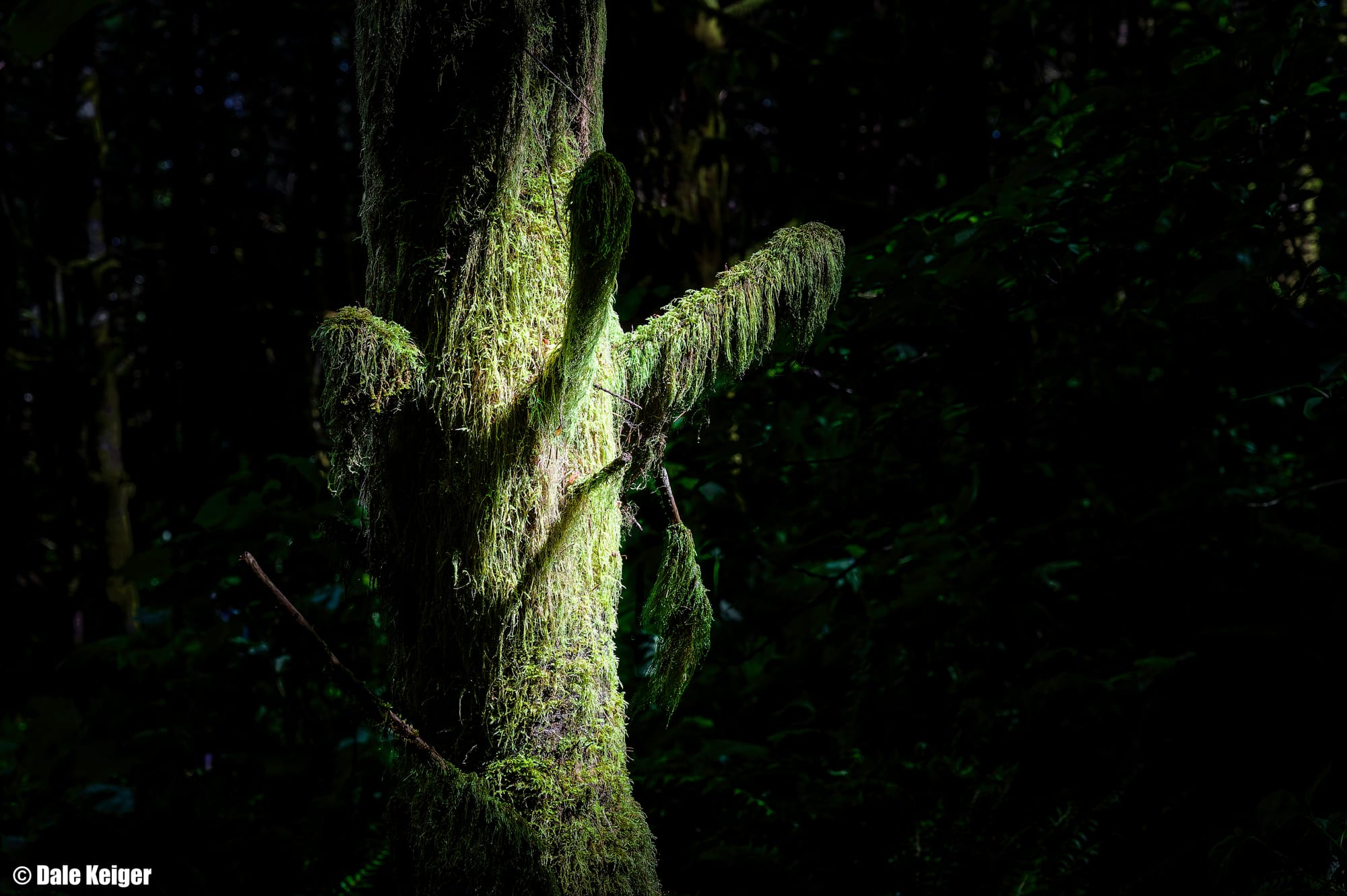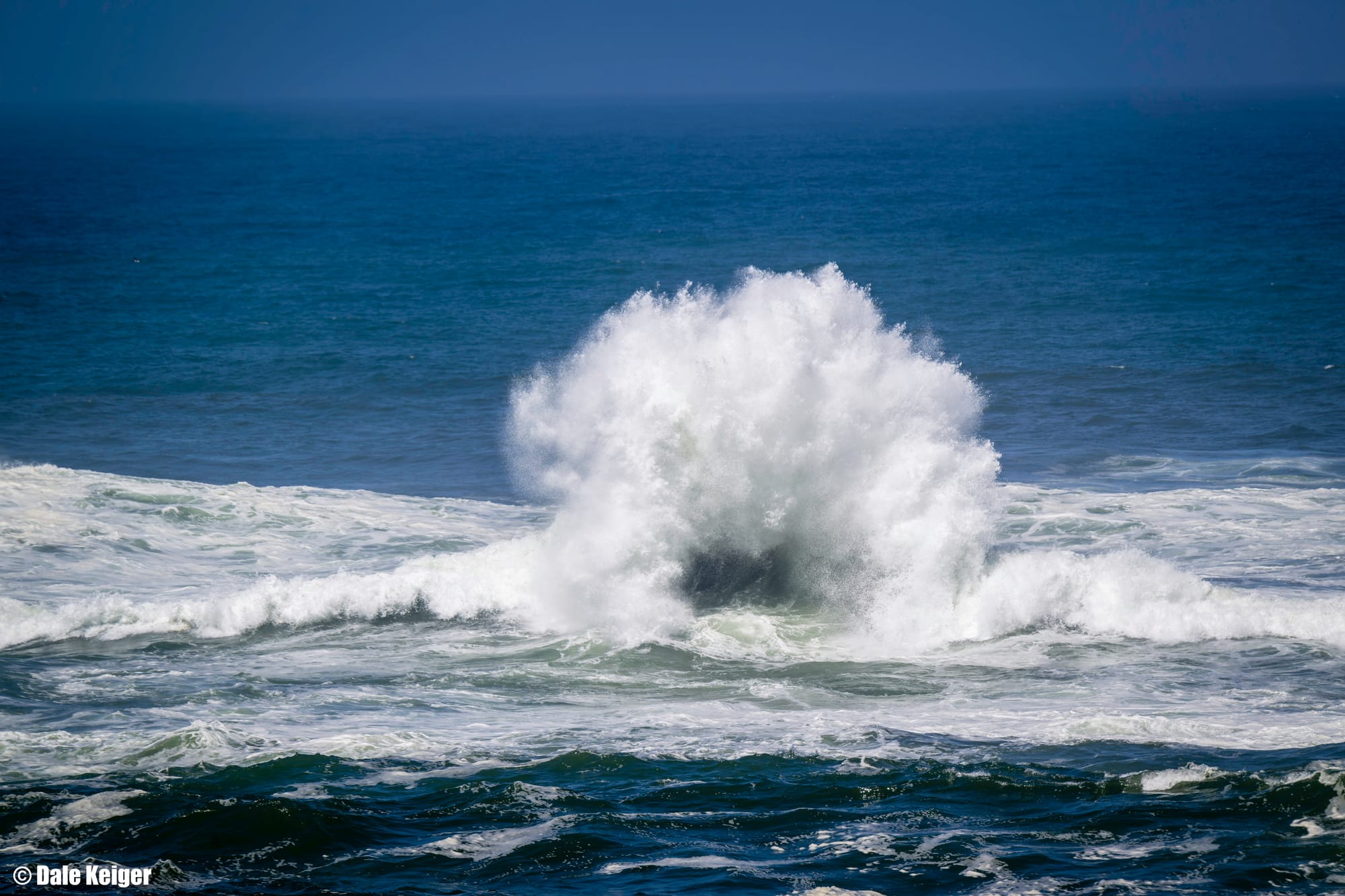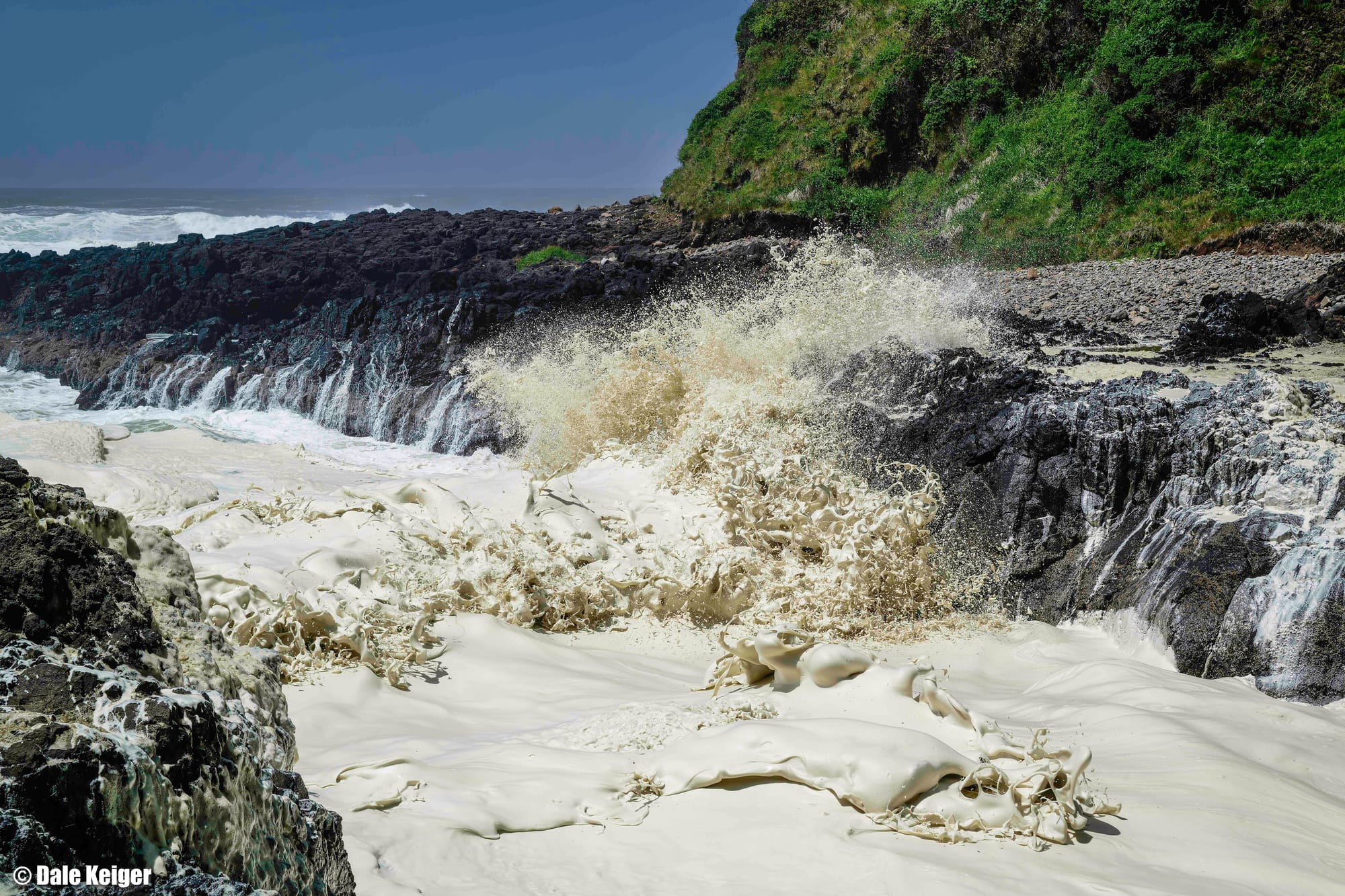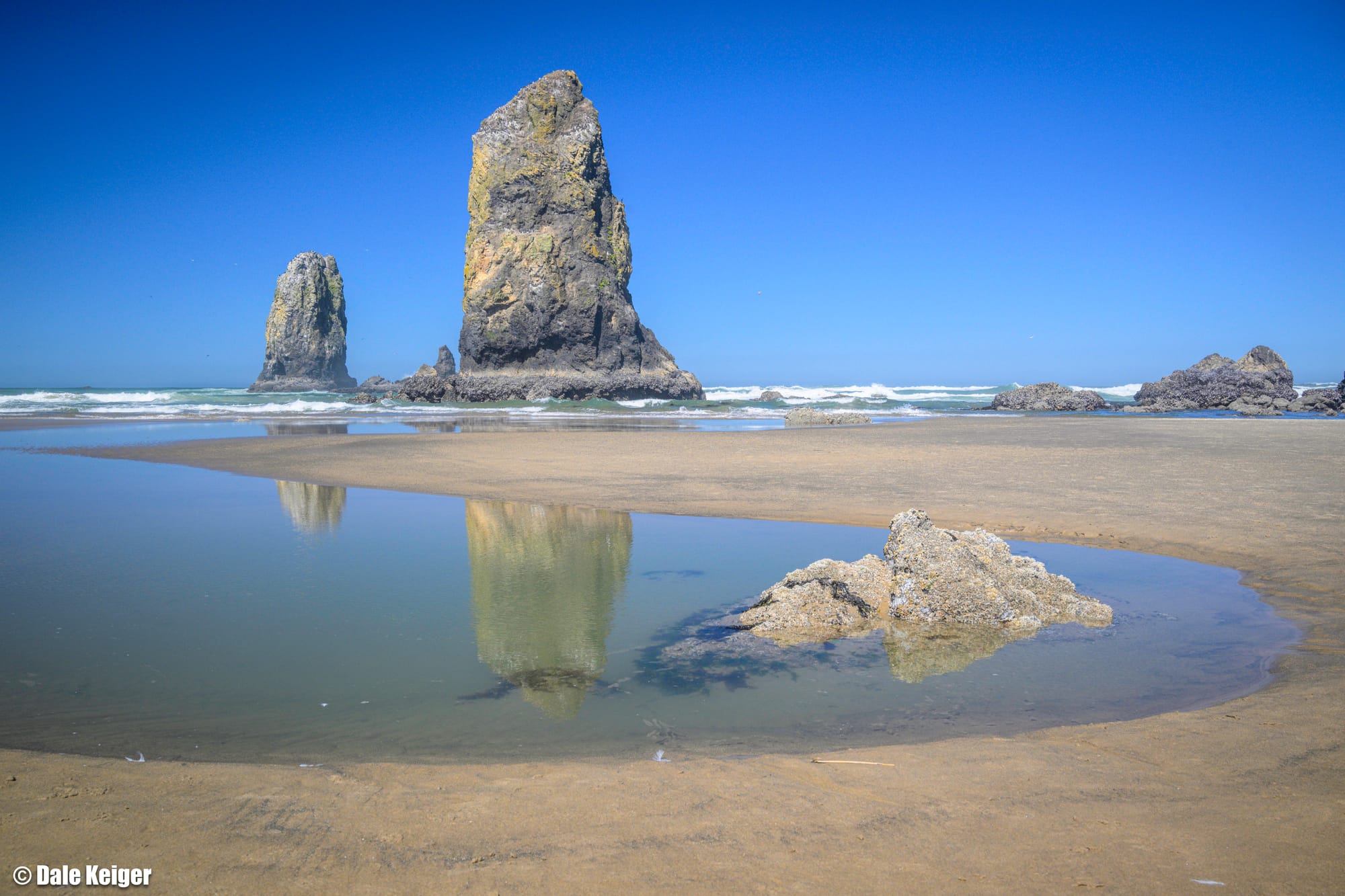What about now? Is now good for you? My [now] or your [now]?
![What about now? Is now good for you? My [now] or your [now]?](/content/images/size/w960/2024/06/IMG_7585.jpeg)
How long is now? The ephemeral nano-time between what just happened and what might happen? The 1/300th of a second that a camera shutter was open to the light bouncing off of tree, water, and rock? How long is the now of a 200-year old conifer, or a fern that as a species has witnessed 380 million years, or the energy that has traveled as a wave to erode an infinitesimal bit of basalt that first flowed upon the earth’s crust 17 million years ago?
As I was photographing western Oregon at the beginning of June, forest and surf and basaltic sea stacks seemed to pull time like putty, and not just because I was woozy from a second round of covid-19. All my life I’ve heard people, mostly dim self-important people I did not like, admonish, There’s no time like the present. And they were right. But not in any way they might have imagined.
“Now” is not a thing, it’s a concept, an artifact of the mind’s need to sort perception into some kind of order. Quotation marks can layer on an unwanted suggestion of irony or skepticism, so let’s adopt [now] to stand in for that thing under discussion here, that slice of time bracketed by before and after—an imperfect typographical solution but it will do. Defining a material [now] requires a decision about dimension. So, just how thin would that physical divider between earlier and later need to be? When would a serial division of time into slivers stop, when would you reach the exact point of saying, “Now! Time stops right there to create [now] right now!” You see the problem.
Without some concrete standardized [now] that could be stashed for reference in a vault at the National Institute of Standards and Technology, we are left with a perceptual [now], and that one is far more elastic. When we are absorbed in a task, [now] elongates. When we sleep, where does the [now] go? A photograph could be the record of light striking a camera sensor for 0.002 seconds. That’s a short [now], the short [now] of the art project let’s call Shooting the Oregon Coast 2024. But the surf carving the coastal rocks—the art project called Sculpting the Cannon Beach Sea Stacks—surely that has a longer [now], at least from the perspective of the aqueous sculptor.
All this can play with your head. Now now, just breathe...

Outside of Corvallis, Oregon State University maintains the MacDonald Research Forest. Portions of it harbor some old-growth Douglas firs, trees more than 200 years old. The everyday name notwithstanding, Pseudotsuga menziesii is not a fir tree, which is why some pedants insist its name should be spelled Douglas-fir. (We do not abide, having more respect for the hyphen.) Some people call the tree Douglas spruce; it isn’t a spruce, either. Its Latin designation means, roughly, “not a hemlock.” This all seems like an undue amount of naming something by what it isn’t. We have started a petition to formally rename it “Big Ole Conifer” and leave it at that.
How big ole? The Nooksack Giant in Washington state topped out at 465 feet with a trunk 34 feet in circumference. We can be that precise in measurement because loggers chopped it down in the 1890s. Of course they did.
In the MacDonald, plants of every type and size grow wildly on every available substrate. They soar from the ground, hug the dirt, live on each other, fill every niche. Trees, ferns, mosses, wildflowers, grasses, if photosynthesis were audible this place would roar. You squint to peer at the canopy of a tree that predates you by 150 years and might survive you by 500. There’s an entire ecosystem up there that exists only in the overstory, up where treetops reach sky, and you will never see it. Below ground a mycorrhizal network connects the trees in mysterious ways; you will never see that, either.
Now and then OSU forest managers infuriate parts of the public by logging sections of the MacDonald, once felling a tree reputed to be 440 years old. That is, a tree that may have sprouted in the same year that Ivan the Terrible died, Elizabeth I was collecting evidence against Mary Queen of Scots, Sir Walter Raleigh had begun establishing the Roanoke colonies, and Holland’s William of Orange became the first head of state ever to be assassinated by a handgun. Douglas-not-firs-not-spruce-not-hemlocks can live for ~1,300 years, though few if any do anymore. If you are a 700-year-old tree, what sense of [now] do you transmit through the mycorrhizal web? (Think of J.R.R. Tolkien’s sentient trees, the Ents, and their advice: “It take a long time to say something in old Entish.”)
Douglas firs are named for the Scottish botanist David Douglas, who lasted only 34 years before he was trampled to death by a bullock in Hawaii. Well, there you go.

The sun warms the air, but not evenly. Solar heat is never equally distributed. So the air is hotter here than over there, and the hotter air rises, and as it rises its ascent reduces the air pressure. A gradient forms and along this gradient air begins to flow from points of higher pressure to lower—that is, wind begins to blow. As the wind blows across the surface of the ocean, friction causes a transfer of energy from air to water and what moved across the air as wind now moves through water as a wave.
Standing at land’s end at Oswald West State Park, I watch as waves that might have traveled thousands of miles collide with the sea bed and the North America continent. This collision gets complicated as the wave hits various impediments and breaks into massive fragments that bounce off obstructions and collide with each other, propelling water 30 feet into the air in a shape that forms an image of sound. Oh! the breaking wave seems to say, perhaps in anger. (It looks angry.) The Oh! does not linger—capturing one happened in 1/1000th of a second. A very short [now].

Down the road from the town of Yachats at Cape Perpetua, for centuries the ocean bored into a lava tube that was softer than surrounding rock until it had dug out a long narrow sea cave. Eventually the cave caved in, creating a narrow inlet that now channels the relentless surf and creates a frothy phenomenon known as the Devil’s Churn. All that banging around creates a suspension of air bubbles and silt that turns the sea water into something resembling pancake batter. Bubbles and rock particles in suspense—and how long can anything hang in suspense? I won’t keep you in suspense: only for [now]. The instant that [now] becomes later, the bubbles and bits pop away and settle out and the batter becomes ocean again.

The basalt sea stacks at Cannon Beach are what’s left of where Oregon used to be, the remnants of forces whose magnitude is hard to imagine. There are places on Earth where the mantle is far hotter than normal; no one knows why. They are known as volcanic hotspots, and one of them underlies Yellowstone National Park in northwest Wyoming. At least it does now. For eons, the North American Tectonic Plate has been moving over it, and about 17 million years ago the hotspot was under Oregon. Lava flowed out of the Columbia River basin into soft marine sediment and added basalt cliffs to the Oregon coast.
These cliffs were not uniform in composition. Softer rock mingled with the volcanic basalt and fractured in various places. Ocean waves pounded the coast, eroding the less resilient sedimentary rock and exploiting the fractures until the soft rock sheared away from the basalt. Over time, a lot of time, the surf scoured the volcanic rock and isolated the massive rocks we now call sea stacks.
The biggest and best known of the remnants is Haystack Rock, 235 feet from summit to surf. But the adjacent Needles made for better pictures. I look at the image above and I see a long [now]. Were I to return in five years and make the same picture, the pinnacles would look unchanged. If what you see five years from now is the same as what you saw last week, wouldn’t that create a five-year [now]? But as the tide comes in, every wave that breaks at the sea stack’s base erodes a granule here and a granule there—one after another, each granular [now] so short as to be...whup, you missed it. A millisecond [now].
Every [now] is a piece of present, and every day we are advised to live in the present. But which one? There is no time like the present. Indeed.
Member discussion